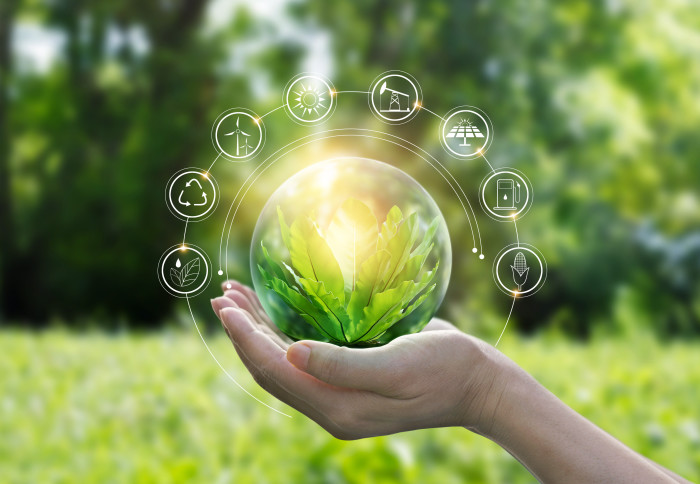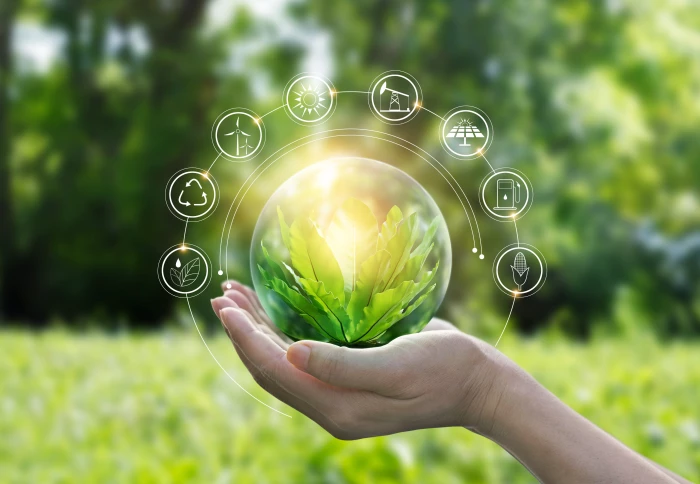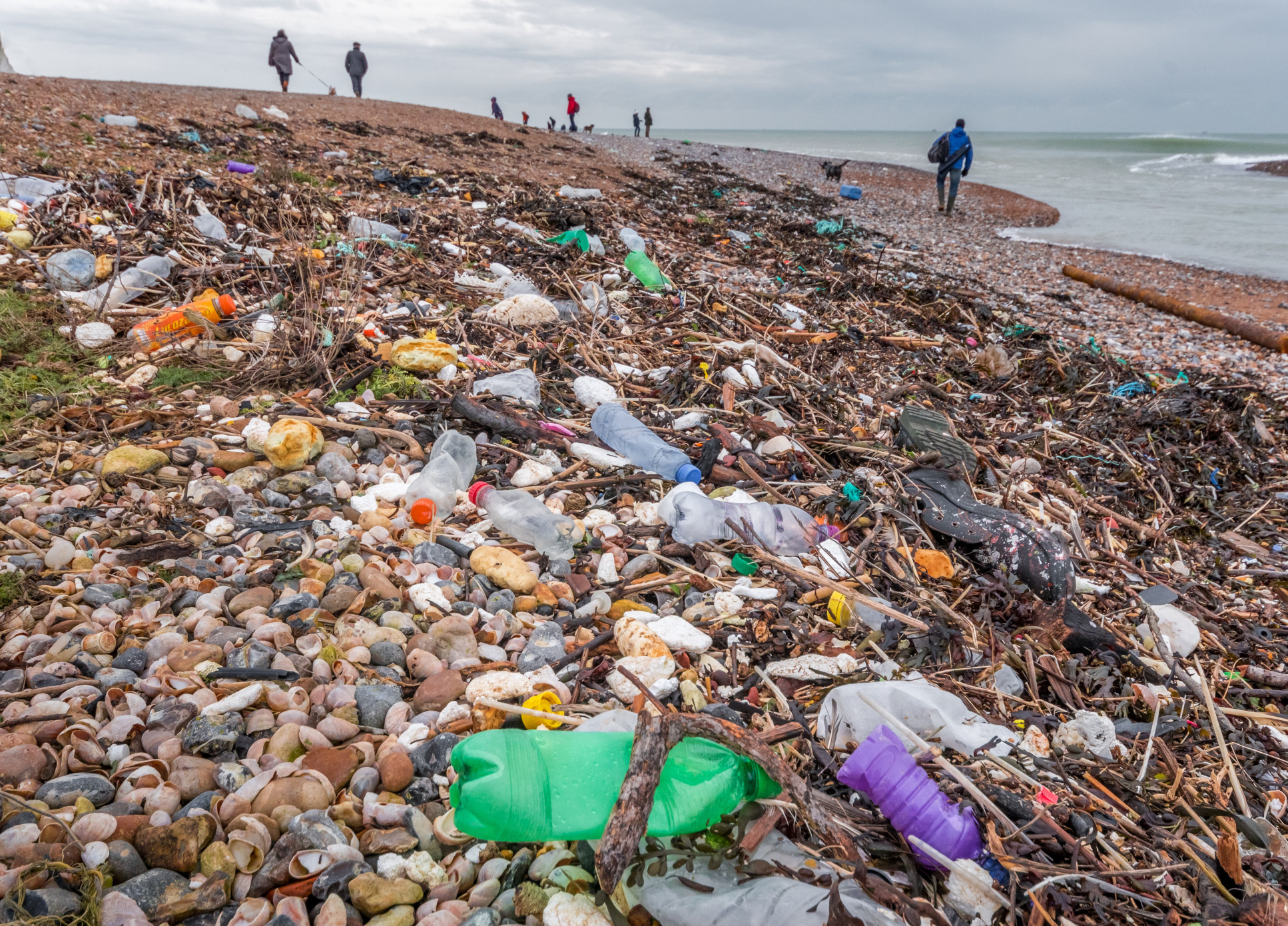Imperial researchers driving globally sustainable production and consumption


Innovative solutions in bioplastics, cotton production and waste feathers are helping to meet UN Sustainable Development Goal (SDG) number 12.
The United Nations' 17 SDGs set out an ambitious blueprint for global peace and prosperity for people and the planet.
Multidisciplinary research and innovation across Imperial College London is helping to address the SDGs. This year, the College launched a new Global Development Hub to bring together Imperial’s expertise and maximise the global impact of its world-leading research, education and innovation.
In recent months, the Global Development Hub has run a series of events to showcase the work of Imperial staff, students, alumni and global partners whose work is helping progression towards achieving the SDGs. This summer, the Global Development Hub is focussing on SDG 12: Responsible Consumption and Production.
Global consumption and production relies on the use of the natural environment and resources and is having a destructive impact on the planet. Latest projections estimate that the global population could grow to around 9.6 billion in 2050, which would require the equivalent of almost three planets to provide the natural resources to sustain our current lifestyles. SDG 12 aims to ensure the sustainable management and efficient use of natural resources to preserve the environment and secure a better quality of life for all.
To showcase some of the work across Imperial that is helping to achieve this goal, the Global Development Hub highlights three case studies of researchers and innovators focused on the responsible consumption and production of three specific materials: plastic, cotton and feathers.
Biodegradable plastics to combat pollution and food waste
With 79% of plastic waste finding its way into our landfills, soils and oceans, many of us are becoming increasingly aware of the negative impact of plastic on our environment. But this material still plays an important role in our modern lives. Plastics have also led to significant savings in greenhouse gas emissions across sectors, including transportation (by replacing heavy materials such as glass) and food waste prevention (by extending the shelf-life of packaged goods). Still, there is an urgent need to rethink how we make, use and dispose of plastics and find sustainable alternatives.

One of the many proposed solutions is the use of biodegradable plastics. Biodegradable plastic can be decomposed under certain conditions into carbon dioxide (CO2), water and organic matter by naturally occurring microbes. These bioplastics therefore could provide an alternative to hard-to-recycle plastics, such as those found in crisp packets, food wrappers and cling film. Food waste is increasingly recognised as an important untapped resource, for example in biofuel, biogas or fertilizer and so designing plastic packaging that can be processed alongside food waste would be beneficial. This approach could reduce the amount of food waste that ends up in landfills, helping to build a circular economy and addressing SDG 12.
Sarah Kakadellis’ research aims to address the suitability of biodegradable plastics in our current food waste management infrastructure and better understand the challenges and opportunities of these materials. Taking a systems approach, her current work explores how we can design a framework to ensure consumers have the tools to make the right decisions when disposing of biodegradable plastics. Ultimately, this research aims to fulfil the ambitions of a circular and sustainable economy for plastics.
New threads: towards sustainable cotton
Cotton is the most widely used natural fibre in the textile industry, with an estimated 27 million tonnes produced annually. Despite its widespread use, the water footprint of cotton is large, requiring between 8,000 and 10,000 litres of water to produce one kilogram of cotton on average, which equates to 2.6% of global water usage. Water scarcity is estimated to directly affect two-thirds of the world's population within the next five years. Current cotton production methods are not environmentally sustainable and undermine the industry's ability to maintain future production, which also puts millions of jobs at risk worldwide. There is a need for a more sustainable and efficient way to grow this material.
Hoping to address this issue is Materra, a technology company co-founded by Imperial Engineering alumni Edward Brial, Edward Hill and John Bertolaso. Materra aims to build a more climate-resilient farming system that produces more sustainable cotton for the fashion industry. Over the past two years, the company has been running trials of their technology and farming approach at a test site in Essex, UK. Results from these trials have demonstrated the ability of Materra’s technology to produce extra-long-staple cotton that is pesticide-free, uses 80% less water and fertilizer, and increases yields four-fold.
Earlier this year, the company set up its first industrial pilot in Gujarat, India’s largest cotton-growing region with collaborators Fashion for Good, Arvind Limited, Kering and PVH Corp. Through this project, the Materra team will be working closely with farmers on the ground to design and implement their real-time data tracking approach. This innovative work is helping to achieve SDG 12 and specifically target 12.2, achieving the sustainable management and efficient use of natural resources.
Fulfilling the potential of feathers
Poultry is a popular source of dietary protein around the world, with approximately 134 million chickens being consumed every day. But what happens to all those feathers? Making up around 5-8% of a bird's weight, feathers quickly become a significant waste disposal issue. Current estimates show that about three million tons of waste feathers are generated every year in Europe alone.
The mission of Dr Elena Dieckmann is to harness the properties of these waste feathers to create useful and novel materials and promote a circular economy. Dr Dieckmann has investigated the use of feathers for sound absorption and thermal insulation in different industries such as packaging in cold-chain delivery products. In a study published in 2019, she used an experimental design to test the effectiveness of woven feather fibre mats against commonly used expanded polystyrene (a single use plastic). These experiments monitored how well each of these two packaging materials kept meat stored in cardboard boxes lined with thermal insulation, finding that that the feather insulation had comparable thermal performance to conventional packaging. Dr Dieckmann has now put this evidence into practice with start-up company Aeropowder, which aims to develop packaging products using feathers.
Dr Dieckmann’s work on novel ways to use feathers has a focus on Sustainable Development target 12.5, reducing waste generation through recycling and reusing materials and 12.2, achieving the sustainable management and efficient use of natural resources.
Article text (excluding photos or graphics) © Imperial College London.
Photos and graphics subject to third party copyright used with permission or © Imperial College London.